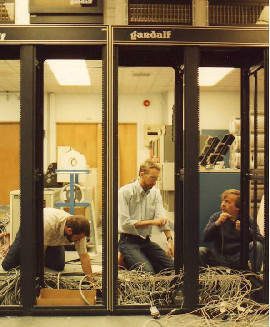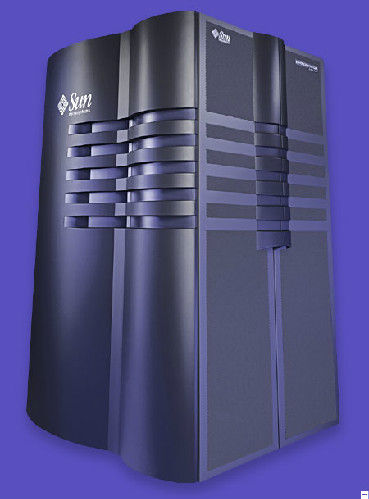William & Mary Information Technology's Timeline
Key Events
|
First computer on campus (1967) |
VoIP phone system (2010) Google email for students (2010) Jones Hall becomes home for (most of) IT (2010) Exchange email and calendar for Fac/Staff (2011) E-Commerce (Credit Card Payment System) (2012) Launch of W&M Mobile (2014) CRM (Building Bridges) Project (2015) Wireless network upgrade begins (2016) |
1967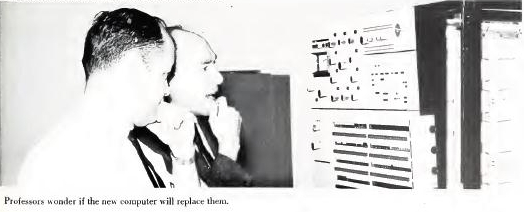
- IBM 360/50 is W&M's first computer.
- Prof. Raymond W. Southworth (Math) is the Director of the Computer Center.

1969
- Jones Hall opens.
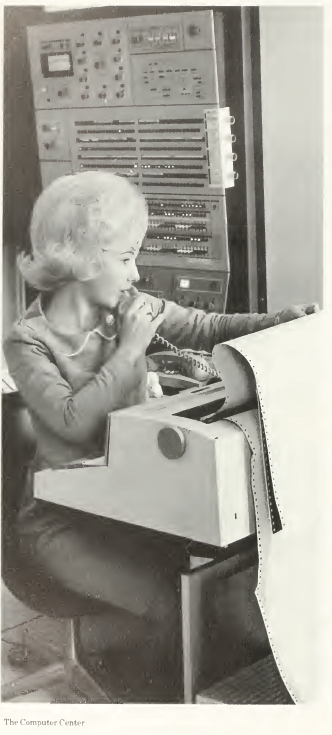
1976
- IBM 370/145 replaces the IBM 360/50 with updated technology.
1977
-
IBM 370/158 replaces the IBM 370/145 with updated technology.
1981
- First Prime computer at W&M, used for academic interactive computing from CRT terminals in labs around campus.
1982
- Second Prime computer is added.
1983
- Prime is upgraded and third Prime computer is added to systems.
1986
- W&M joins BITNET, an early TCP/IP Internet email and file server access system that connects universities and research centers to each other.
1988
- W&M purchases 40 PCs for first PC lab on campus.
1989
-
New Telco system replaces Gandalf terminal port selection switch with ADIs, which allow for data over voice on the new Telecom system.
- Data can now be sent over the wires of the phone system.
1990
- Last Prime computer is removed in December.
1991
- IBM RS6000 AIX mail server is implemented.
- AIX is a Unix operating system.
- A lab for academic Unix is installed. DB2, an IBM database system, is installed on the mainframe.
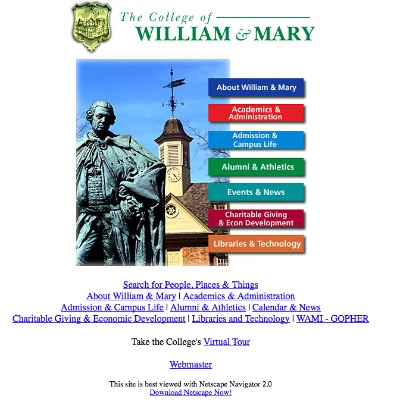
1994
- Internet is made available for faculty and staff.
1996
- Residence halls are wired for Internet access.
- Cable TV is available in residence halls.
- First W&M webpage is created, including a space for IT.

1997
- Official birth year of W&M IT as we now know it. On November 3, 1997, the four departments that reported to the Associate Provost for Technology (Educational Media Services, Telecom, Computer Center and the Help Desk) merge into one department, creating what we now know as Information Technology.
1998
- Formation of the Technology Support Center. Creation of Academic Liaison Program for greater support to academic departments.
- IBM's AIX mail solution is used for email in June.
- In August, email addresses are shortened to @wm.edu, replacing @facstaff.wm.edu and @mail.wm.edu.
- Uninterruptible power supply is installed after the motor generator for the Jones Hall machine room fails.

1999
- Blackboard Course Management System (known as Course Info) debuts in W&M courses.
- In May, the listserv ITINFO-L begins "disseminating IT news items that apply to wide segments of the community." This is an early version of the W&M Digest.
- The Equipment Service Program starts to lease institutionally-owned computers in July.
- First Fall Startup with W&M IT staff stationed in residence halls to assist students with connecting to the network before classes begin in August. Before 1999, students were charged by a local company for assistance.
- In September, Hurricane Floyd floods Jones Hall and the computer room. Mail moves to Sun Enterprise 3500 server. Carnegie Mellon's Project Cyrus is used to run the back end of mail on campus. SAP is installed on Sun Unix servers.
- In December, Y2K testing of administrative applications takes place on the mainframe. Christmas on Ice causes widespread power outages for more than a week. Sun Enterprise 1000 and L11000 robotic tape library are installed for Unix growth.
2000
- Formation of Enterprise Information System.
- Email is running on Sun Unix servers.
- In August, last Novell server is removed from campus and labs are converted to Windows 2000.
2001
- In June, main website is on Worthog, an AIX system.
2002
- Banner goes live with Admissions.
- Harvest application is installed for administrative code tracking.
- Sun SAN is used for storage.
- Campus Pipeline, aka My.wm is first available in August.
- ePrint server is installed in September.
2003
- In April, registration in Banner begins. Enterprise 10000 system is traded in for new Sun systems.
- In July, Mirapoint email is implemented for students, faculty, and staff. Sun 1280 is used for Banner production.
2004
- Facilities Administration Management Information System (FAMIS) software and hardware are purchased and installed.
- Banner Finance goes live.
- Blackboard hardware upgrades occur.
- Disaster Recovery system starts, allowing for the availability of information and system operation on another machine in the event of an emergency.
- In January, Enterprise 10000 machines are removed from the building.
- In November, WM Course Evaluations software is released. Residential network authentication occurs.
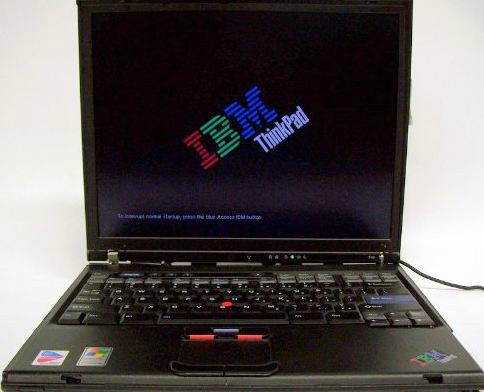
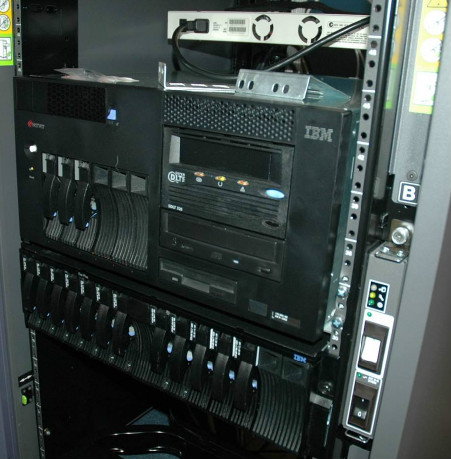
2005
- Notebook requirement for students begins, with W&M recommending the IBM Thinkpad T42.
- MyNotebook program is instituted to meet the need.
- Administration network authentication occurs in February.
- In April, EMC SAN/NAS is installed, supplying greater storage capacities.
- Planning "mini mainframe" replacement for real hardware in October.
2006
- Banner HR goes live in January.
- In March, mini mainframe is installed and old mainframe hardware system is removed.
2007
- Automated provisioning of IT accounts goes live.
- In July, Virtual Private Network (VPN) is installed, allowing secure remote access to Banner Admin enterprise business applications. Last AIX machine is removed.
- In November, WM Digest goes live with condensed email announcements for faculty and staff.
2008
- In July, Cascade web content management system is released. Encrypted wireless is available, providing an additional layer of protection to Internet traffic. Banner Fixed Assets goes live.
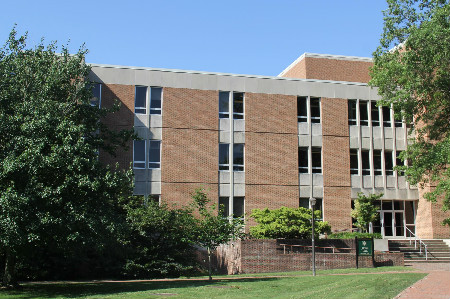
2009
- Mini mainframe is removed in January.
- In May, Cisco CSS load balancer is replaced with Citrix Netscaler load balancer, offering more flexibility and manageability.
2010
-
Voice Over Internet Protocol (VoIP) campus phone system project begins in January.
- In April, Gmail replaces aging Mirapoint web-based mail for student email.
-
Enterprise Information System team moves to Jones Hall from the Dillard Complex in October.

2011
- Microsoft Exchange email replaces aging Mirapoint web-based mail for faculty and staff in the spring.
- Calendar conversion to Microsoft Exchange begins in January.
- In May, Oracle calendar retires and calendar conversion is complete.
- Conversion of campus phone system to VoIP is complete in December. VoIP replaces the aging PBX phone system. Calls are now transmitted through the network instead of an analog phone line.
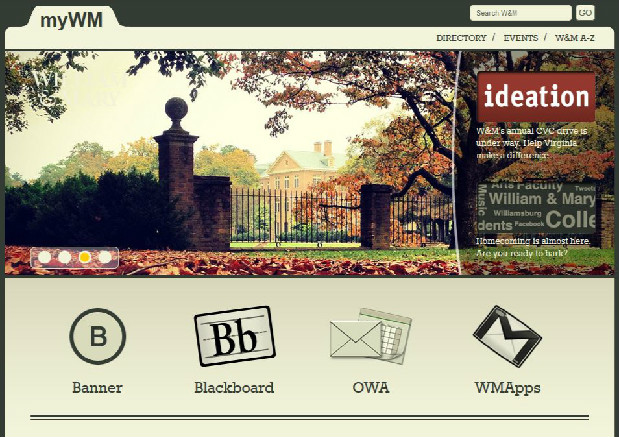
2012
- In June, new myWM webpage is implemented, replacing the Luminus platform.
- In September, limited release of online course evaluation system for specific departments in Fall 2012 semester.
- Start of eCommerce (credit card payment system) implementation. eCommerce system through TouchNet to include payment gateway, bill payment, marketplace and mobile technology in November.
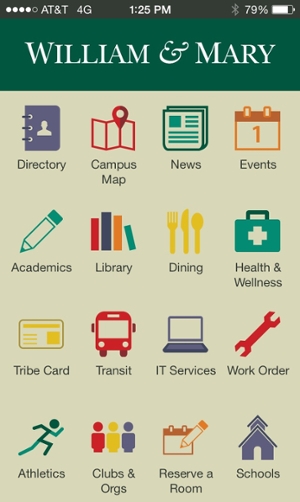
2013
- Start of ID System Project in January, which replaces aging door access and transactions systems with one consolidated system to streamline data entry.
- Final phase of online course evaluation system implementation in May, including the first evaluation period with all courses using new online evaluations.
2014
- Launch of the new mobile application, William & Mary Mobile, available for iOS, Android, and at m.wm.edu. It provides information about the campus and services for the W&M community.
- 2014 Annual Report
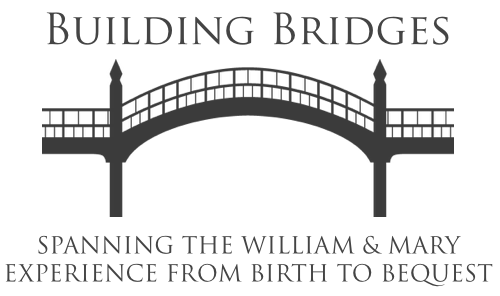
2015
- The adaptation of a campus-wide Constituent Relationship Management (CRM) solution begins. The Building Bridges initiative will bring together the processes related to recruitment, student success, and advancement into one platform.
- In September 2015, contracts are granted to three vendors: Salesforce, TargetX, and ACF solutions.
- 2015 Annual Report
2016
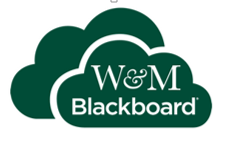 A campus-wide wireless upgrade begins in July, starting in the dormitories and finishing in the academic buildings.
A campus-wide wireless upgrade begins in July, starting in the dormitories and finishing in the academic buildings.- In August, Blackboard moves to the Cloud as part of the Business Innovation initiative, a strategic effort to improve effectiveness and efficiency across the university. Blackboard is now faster and more efficient.
- 2016 Annual Report
2017
- Digital Cable TV was installed in January 2017. Contour, which allows users to stream cable TV on mobile devices also became accessible in the spring semester.
- Microsoft Office 365 replaces Microsoft Exchange as the email/calendar system for W&M faculty and staff.
- Cylance Protect becomes the enterprise computer protection service, replacing Sophos.
- Wifi is installed in the Sunken Gardens.
- DocuSign first used for VA4 tax forms.
- 2017 Annual Report
2018
- Banner Admin is transitioned to Banner 9.
- Duo two-factor authentication is implemented for W&M faculty and staff.
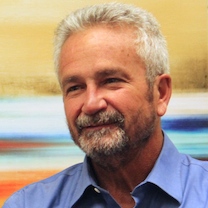 2019
2019
- Eduroam becomes the prevailing secure wireless network as W-M_Wireless_Encrypted is retired.
- After 24 years at W&M, CIO Courtney Carpenter retires on Aug. 23, 2019.
- Duo two-factor authentication is implemented for W&M students.

2020
- Dr. Edward Aractingi joins W&M as the new Chief Information Officer.
- The entire IT team is tasked with transitioning the entire W&M community toteaching, learning and working remotely during the COVID-19 pandemic.
2021
- Barbara Forth is introduced as the university's inaugural Chief Data Officer.
- 2021 Mid-Year Report
2022
- Student email accounts are migrated from Gmail to Microsoft Office 365.
- Phone system is transitioned from Mitel to Teams Calls.
- 2022 Mid-Year Report
- 2021-2022 Annual Report
 Skip to main content
Skip to main content

